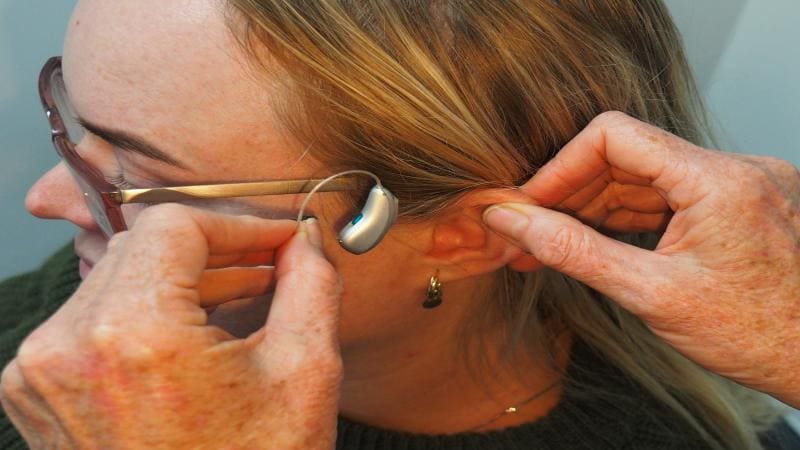Idiopathic Sudden Hearing Loss (ISSHL) is a big problem for doctors. It needs fast and good treatment methods. In this situation, a treatment called Hyperbaric Oxygen Therapy (HBOT) has become important because it works well. Using special chambers called hyperbaric oxygen chambers, HBOT gives a unique way to treat issues like ISSHL that is different from usual treatments. This way means giving patients lots of oxygen in a pressurized area. It’s very different from usual treatments. For patients and doctors who are dealing with ISSHL, understanding the little details, advantages and possible drawbacks of HBOT compared to other treatments is very important. This knowledge is very important when making smart choices and dealing with the challenges of this sudden and often scary situation.
HBOT becoming a way to treat ISSHL is big news in the medical world. It gives new hope and chances for healing. The special way this treatment works is to help more oxygen get to the hurt hearing cells. This gives a new route for dealing with sudden loss of hearing linked with ISSHL. As doctors keep learning about how helpful HBOT is, it becomes more important for patients and people who treat them to know the latest news on this new kind of therapy.
HBOT: Taking a close look at how ISSHL works: A comprehensive analysis
HBOT works by giving lots of oxygen in a pressured space, usually inside a hyperbaric chamber. This more oxygen is thought to help fix ear cells that are broken and bring back hearing. What makes HBOT special is its way of dealing directly with the shortage of oxygen – a big factor in ISSHL.
Looking at HBOT and traditional ISSHL treatments
- Treatment approach: While old-fashioned treatments like corticosteroids try to cut down swelling, HBOT gives blood with lots of oxygen to the parts that are hurting.
- Speed of recovery: HBOT has shown that it can help some patients get their hearing back faster than other treatments.
- Accessibility and availability: Unlike many treatments you can get, HBOT needs special tools and places.
- Side effects: HBOT usually goes well, with fewer bad effects compared to taking medicine for a long time.
- Scientific backing: There’s more and more proof on HBOT, but it isn’t as much or strong as the information for standard treatments.
Evaluating the effectiveness of HBOT
When it comes to working well, HBOT has had good results in many tests. People getting HBOT for hearing loss often see better results, sometimes even when other treatments don’t work. But how well it works can change, and using HBOT with other treatments often makes it more helpful. Oxyhelp gives lots of information and understanding about hyperbaric oxygen therapy. They explain how this treatment works well in different situations.
Limitations and considerations
Even though HBOT is a new treatment, it has its problems. You can’t use it as easily as regular treatments because you need special things. Furthermore, the best time and length for HBOT for ISSHL are still topics that are being studied. It’s important for patients to think about these things along with the possible good things.
HBOT’s impact on ISSHL patients
The stories of people who have used HBOT to treat ISSHL are very motivating and informative. These stories focus on the personal parts of treatment, showing the path from diagnosis to getting better.

Documenting the journey: from diagnosis to recovery
- Case Study 1: A person with sudden hearing loss got much better after some HBOT treatments. They partly got their hearing back in just a few weeks.
- Case Study 2: A person who didn’t respond to normal treatments tried HBOT as a final option and got a big improvement. Their hearing almost came back all the way.
- Case Study 3: An adult with hearing loss underwent oxygen therapy and noticed better hearing and fewer tinnitus problems.
- Case Study 4: An old patient, unsure about HBOT, went for the treatment. They were happily surprised when their hearing got much better, making their life better.
- Case Study 5: An artist, whose job was in danger because of ISSHL, got their hearing back and could play music again thanks to HBOT.
The personal change of HBOT on ISSHL patients
These studies show how HBOT can directly affect people with ISSHL. Many patients say they not only hear better but feel better and have a better life. These stories often talk about how the treatment can help where other options haven’t worked.
Many people who receive HBOT for ISSHL report extra advantages along with hearing improvement. This includes lower worry and panic levels, better sleep times, and a general good feeling. This is probably because of the extra oxygen and blood flow made possible by the treatment.
The stories of people getting better from ISSHL with HBOT show that there is hope and chance. They not only show that HBOT can help with sudden hearing loss but also how it affects the quality of life for patients. As we keep writing about and studying these good stories, it becomes more obvious how helpful HBOT is for treating ISSHL. This makes it a useful treatment choice for those who get this unexpected and usually upsetting condition.
In the end, when it comes to dealing with ISSHL both HBOT and normal ways have their own special powers and failings. Treatment should be chosen based on what the patient needs, how easy it is to get, and advice from doctors. As science in this area keeps changing, so will our knowledge of the best ways to treat. People who want to learn more about HBOT therapy should try Oxyhelp’s HBOT chambers. They offer a way to dig deeper into this new treatment option.



